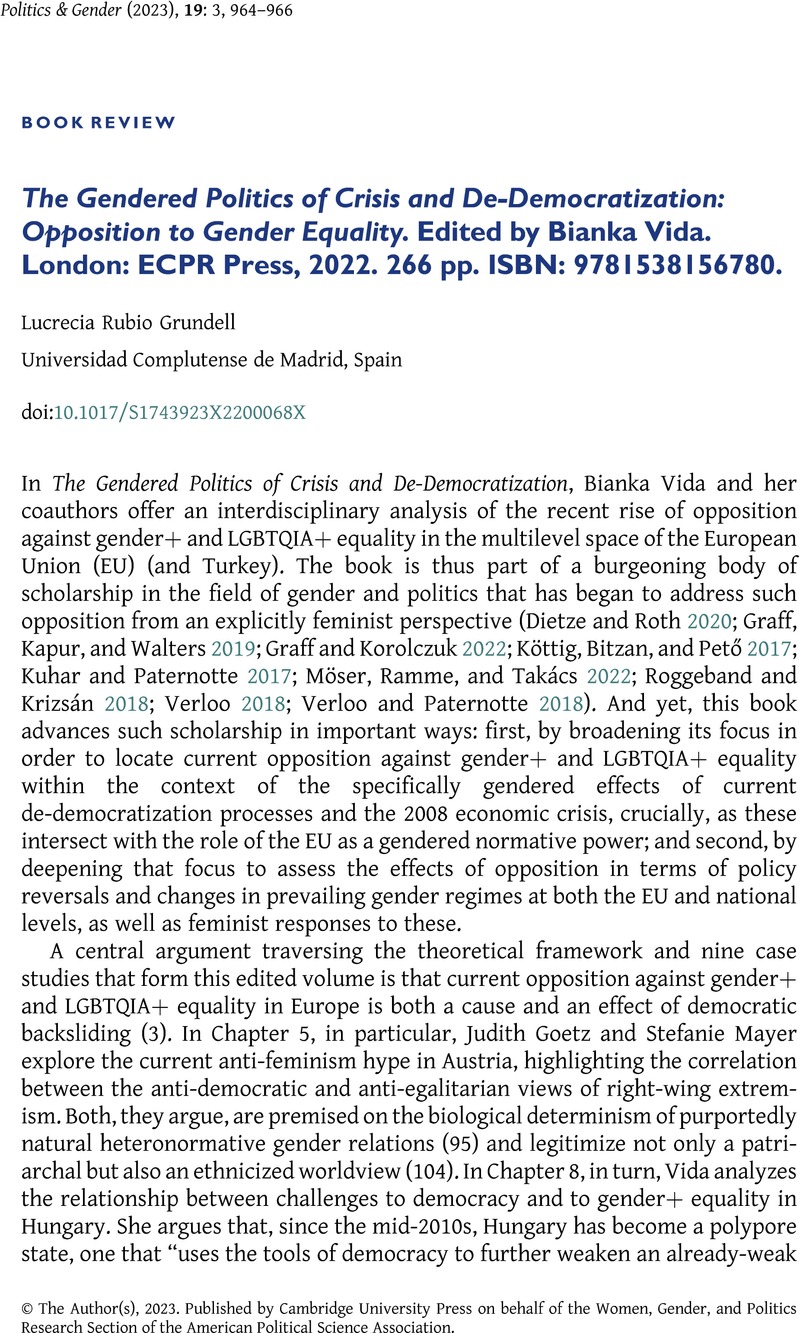No CrossRef data available.
Article contents
The Gendered Politics of Crisis and De-Democratization: Opposition to Gender Equality. Edited by Bianka Vida. London: ECPR Press, 2022. 266 pp. ISBN: 9781538156780.
Review products
The Gendered Politics of Crisis and De-Democratization: Opposition to Gender Equality. Edited by Bianka Vida. London: ECPR Press, 2022. 266 pp. ISBN: 9781538156780.
Published online by Cambridge University Press: 31 January 2023
Abstract
An abstract is not available for this content so a preview has been provided. Please use the Get access link above for information on how to access this content.

- Type
- Book Review
- Information
- Copyright
- © The Author(s), 2023. Published by Cambridge University Press on behalf of the Women, Gender, and Politics Research Section of the American Political Science Association
References
Dietze, Gabriele, and Roth, Julia, eds. 2020. Right-Wing Populism and Gender: European Perspectives and Beyond. Bielefeld: Transcript Publishing.Google Scholar
Graff, Agnieszka, Kapur, Ratna, and Walters, Suzanna Danuta. 2019. “Introduction: Gender and the Rise of the Global Right.” Signs: Journal of Women in Culture and Society 44 (3): 541–60.CrossRefGoogle Scholar
Graff, Agnieszka, and Korolczuk, Elżbieta. 2022. Anti-Gender Politics in the Populist Moment. New York: Routledge.Google Scholar
Köttig, Michaela, Bitzan, Renate, and Pető, Andrea, eds. 2017. Gender and Far Right Politics in Europe. Cham, Switzerland: Palgrave Macmillan.CrossRefGoogle Scholar
Kuhar, Roman, and Paternotte, David. 2017. Anti-Gender Campaigns in Europe: Mobilizing against Equality. New York: Rowman & Littlefield.Google Scholar
Möser, Cornelia, Ramme, Jennifer, and Takács, Judit, eds. 2022. Paradoxical Right-Wing Sexual Politics in Europe. Cham, Switzerland: Palgrave Macmillan.CrossRefGoogle Scholar
Roggeband, Conny, and Krizsán, Andrea. 2018. “Reversing Gender Policy Progress: Patterns of Backsliding in Central and Eastern European New Democracies.” European Journal of Politics and Gender 1 (3): 367–85.CrossRefGoogle Scholar
Verloo, Mieke, ed. 2018. Varieties of Opposition to Gender Equality in Europe. New York: Routledge.CrossRefGoogle Scholar
Verloo, Mieke, and Paternotte, David. 2018. “The Feminist Project under Threat in Europe.” Politics and Governance 6 (3): 1–5.CrossRefGoogle Scholar


